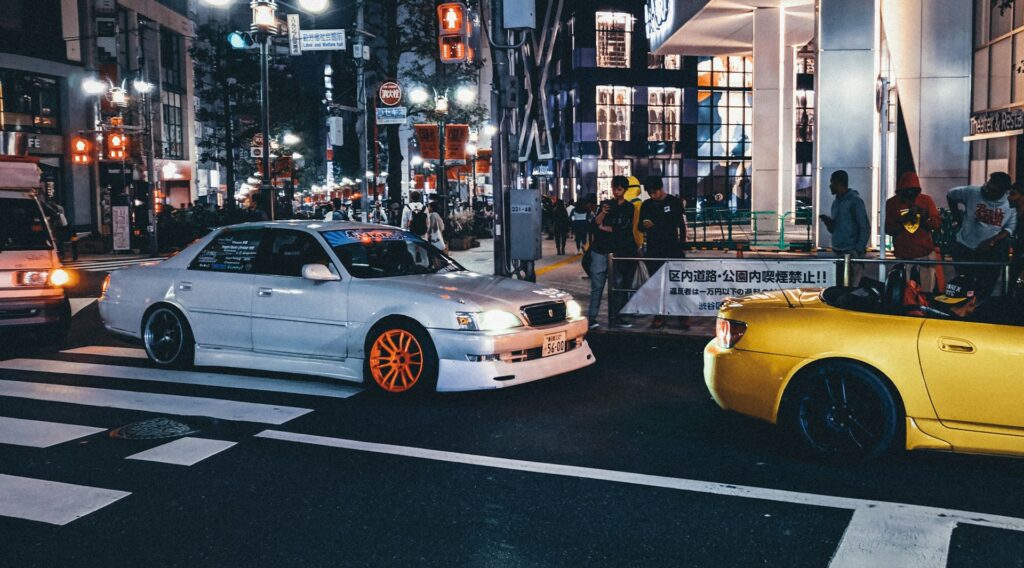There’s a certain thrill that comes with seeing a sleek Nissan Skyline roar down the street or a Toyota Supra gracefully hugging every corner it’s more than just a car; it’s a lifestyle. This is the essence of JDM, or Japanese Domestic Market, culture a world where engineering precision, performance, and style converge to create vehicles that captivate enthusiasts worldwide. Born from Japan’s rich automotive history, JDM culture has transcended borders, influencing car communities across the globe, from the streets of Tokyo to meetups in Los Angeles and Sydney. For car enthusiasts, it’s not just about the cars themselves it’s the thrill of the drive, the artistry of customization, and the shared passion that turns every JDM vehicle into a symbol of identity, creativity, and camaraderie.
Origins of JDM Culture
Japanese car manufacturing has long been celebrated for its precision engineering, reliability, and innovative technology. From the post-war era, companies like Nissan, Toyota, Honda, and Mazda began producing vehicles that balanced performance with everyday usability, slowly capturing the attention of car enthusiasts both domestically and abroad. By the 1980s and 1990s, a distinct culture emerged in Japan: the tuning and street racing scene. Underground racing circuits and spirited car meets became hotbeds for creativity and competition, where drivers modified their vehicles to push the limits of speed and handling.
This era produced some of the most iconic cars in automotive history. The Nissan Skyline GT-R, Toyota Supra, and Mazda RX-7 became symbols of performance and aspiration, combining powerful engines with lightweight designs. These vehicles weren’t just machines they were canvases for personal expression, each modification reflecting a driver’s skill, style, and identity. It’s no surprise that these cars sparked global fascination, laying the foundation for what would become the JDM movement worldwide.
Key Elements of JDM Culture
At the heart of JDM culture is performance and engineering. Japanese cars are celebrated for their precise handling, reliability, and adaptability, making them ideal for tuning enthusiasts looking to extract maximum performance. Design aesthetics also play a crucial role JDM cars are known for sleek lines, aggressive styling, and attention to detail that make them instantly recognizable on the road.
Customization is another defining feature. Engine swaps, suspension upgrades, widebody kits, and aftermarket wheels allow owners to make their cars truly unique. This creative freedom is deeply intertwined with motorsport influence, as drifting, circuit racing, and street racing traditions continue to inspire car setups and driving techniques. Pop culture further amplifies the allure: iconic films like Fast & Furious, the anime Initial D, and racing video games introduced millions to JDM cars, turning these vehicles into symbols of excitement, style, and rebellion.
Why Enthusiasts Are Drawn to JDM Cars
For many enthusiasts, the appeal of JDM cars lies in the driving experience itself. Lightweight frames, responsive steering, and finely tuned engines create a sense of connection between car and driver, making every twist and turn exhilarating. Beyond performance, JDM culture fosters a strong community and lifestyle. Car meets, online forums, and club events bring together like-minded individuals who share a passion for Japanese vehicles and the stories behind them.
Exclusivity is another draw. Many JDM models are rare imports or limited editions, giving owners a sense of pride and uniqueness. Finally, there’s a deep cultural appreciation: enthusiasts respect the philosophy behind Japanese automotive engineering efficiency, reliability, and innovation values that elevate JDM cars beyond mere machines to works of art and engineering mastery.
Modern JDM Scene
Today, JDM culture continues to evolve while staying true to its roots. Classic models like the Nissan Skyline and Toyota Supra have experienced a global revival, with collectors and enthusiasts restoring and modernizing these legendary vehicles. Even in the age of electric and hybrid technology, Japanese automakers are finding ways to adapt JDM principles to new platforms, blending performance with sustainability.
Trends in modifications, car shows, and community events continue to grow worldwide. From stance culture to drifting competitions, modern JDM enthusiasts embrace both tradition and innovation, ensuring the culture remains dynamic and inspiring for future generations.
Conclusion
JDM culture endures because it embodies more than cars it represents passion, creativity, and community. Its influence is felt in automotive design, motorsport, and popular culture around the globe. For car enthusiasts, JDM is a lifestyle, a form of self-expression, and a celebration of engineering excellence. Whether attending a car meet, tuning a classic import, or simply admiring a sleek JDM vehicle on the street, the culture invites everyone to experience the thrill, artistry, and camaraderie that make Japanese cars legendary.
